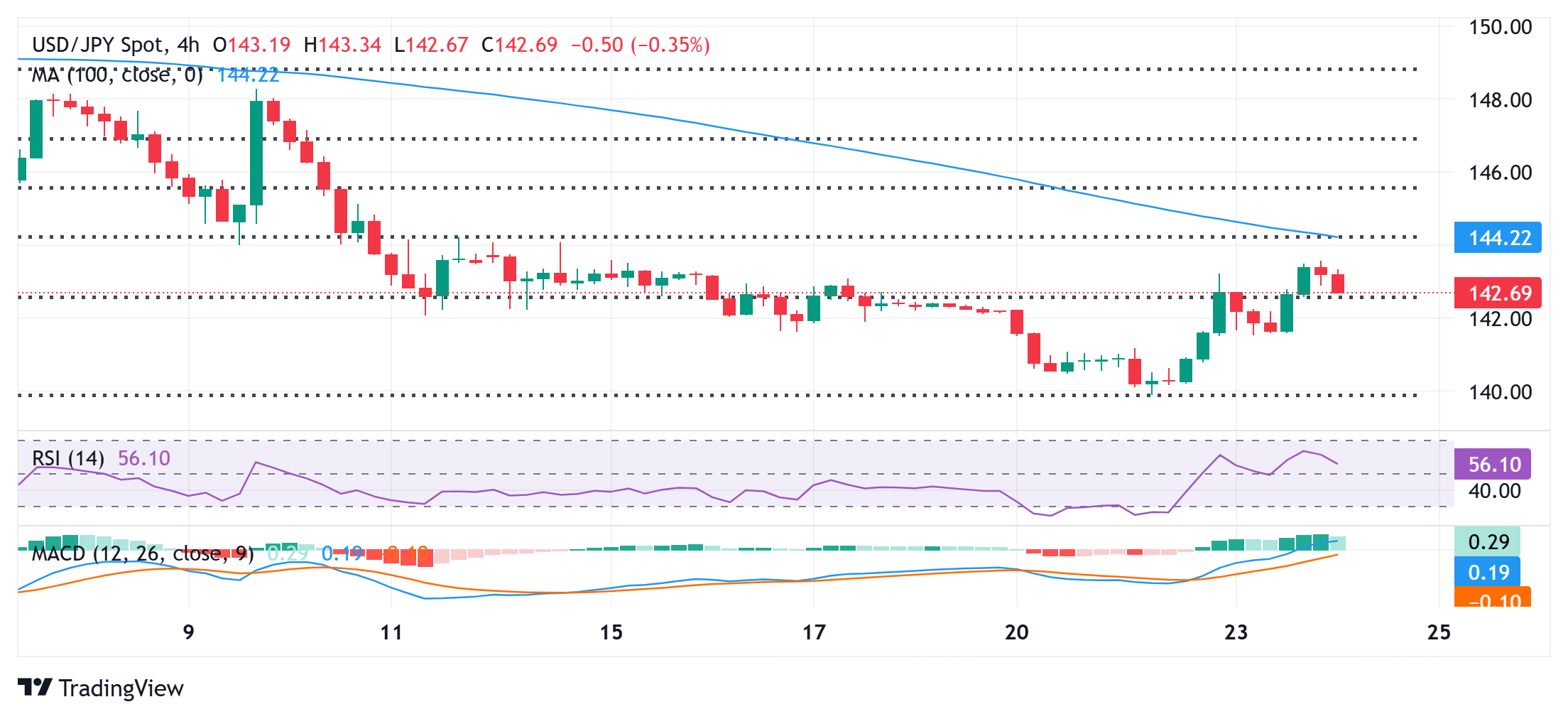提供最佳价差和条件
 了解更多
了解更多
The Japanese Yen (JPY) edges higher against its American counterpart during the Asian session on Thursday and for now, seems to have stalled its retracement slide from a multi-month high touched earlier this week. US Treasury Secretary Scott Bessent tempered market expectations for a quick resolution to the US-China trade standoff, which helped revive demand for the safe-haven JPY. Apart from this, the growing acceptance that the Bank of Japan (BoJ) will maintain its stance for policy normalization and hike interest rates further in 2025 underpin the JPY.
Market participants, however, forecast a delay in BoJ rate hikes as US President Donald Trump’s tariff measures have darkened the economic outlook, which might hold back the JPY bulls from placing aggressive bets. Meanwhile, a relatively hawkish BoJ outlook still marks a big divergence in comparison to expectations that the Federal Reserve (Fed) will resume its rate-cutting soon. This should continue to act as a tailwind for the lower-yielding JPY, which, along with the lack of follow-through US Dollar (USD) buying, favors the USD/JPY bears.

From a technical perspective, the overnight close above the 23.6% Fibonacci retracement level of the March-April downfall and the 143.00 mark was seen as a key trigger for the USD/JPY bulls. Moreover, oscillators on hourly charts have been gaining positive traction and support prospects for the emergence of dip-buyers near the 142.45-142.40 region. This should help limit the downside near the 142.00 round figure, below which spot prices could slide to mid-141.00s en route to the 141.10-141.00 region. The downward trajectory could extend further towards the 140.50 intermediate support and eventually expose the multi-month low – levels below the 140.00 psychological mark touched on Tuesday.
On the flip side, momentum back above the 143.00 mark might confront some hurdle near the 143.55 area or the overnight swing high. Some follow-through buying has the potential to lift the USD/JPY pair beyond the 144.00 round figure, towards the 144.35 confluence. The latter comprises 38.2% Fibo. level and the 200-period Simple Moving Average (SMA) on the 4-hour chart, which if cleared decisively should pave the way for some meaningful recovery in the near term.
The Japanese Yen (JPY) is one of the world’s most traded currencies. Its value is broadly determined by the performance of the Japanese economy, but more specifically by the Bank of Japan’s policy, the differential between Japanese and US bond yields, or risk sentiment among traders, among other factors.
One of the Bank of Japan’s mandates is currency control, so its moves are key for the Yen. The BoJ has directly intervened in currency markets sometimes, generally to lower the value of the Yen, although it refrains from doing it often due to political concerns of its main trading partners. The BoJ ultra-loose monetary policy between 2013 and 2024 caused the Yen to depreciate against its main currency peers due to an increasing policy divergence between the Bank of Japan and other main central banks. More recently, the gradually unwinding of this ultra-loose policy has given some support to the Yen.
Over the last decade, the BoJ’s stance of sticking to ultra-loose monetary policy has led to a widening policy divergence with other central banks, particularly with the US Federal Reserve. This supported a widening of the differential between the 10-year US and Japanese bonds, which favored the US Dollar against the Japanese Yen. The BoJ decision in 2024 to gradually abandon the ultra-loose policy, coupled with interest-rate cuts in other major central banks, is narrowing this differential.
The Japanese Yen is often seen as a safe-haven investment. This means that in times of market stress, investors are more likely to put their money in the Japanese currency due to its supposed reliability and stability. Turbulent times are likely to strengthen the Yen’s value against other currencies seen as more risky to invest in.